Old Toronto postcards sometimes reveal lovers’ quarrels and family squabbles, as well as mundane messages. It was necessary to be discreet, since the cards were seen by postal employees, including the local mailman. When viewing the material written on postcards of yesteryear, they appear similar to those sent in emails, or posted on Facebook and Twitter. Some of the messages are like the texts of today, though texts use more abbreviations.
I have been collecting old postcards of Toronto for many years; the postcard shown above is from my collection. It contains a view of Queen Street West, looking east from James Street, toward Yonge Street, about the year 1910. It was produced by Valentine and Sons’ Publishing Company, the most prolific marketer of postcards in the city during the first two decades of the 20th century. In the photo, on the left-hand side, to the east of the Adam’s Furniture Store, is the old Eaton’s Queen Street store, which was demolished to create the south section of the Eaton Centre of today. On the right-hand side of the photograph is the former Simpson’s Department store, which is now the Bay, at Queen and Yonge. The streetcar is a wooden car operated by the Toronto Street Railway Company, which provided city public transit until the TTC was created in 1921.
The Rosehill Reservoir Park is located southeast of the intersection of Yonge Street and St. Clair Avenue East (part of David Balfour Park). This card was mailed on July 27, 1906, to Mr. Norman Pascoe, who address was simply, “Lake Front at Kew Beach.” On the card the sender wrote: “ Dear Norman. We will meet you at Kippen Avenue at seven p.m. Wednesday next, if convenient. If not, please let us know. Yours truly, “Moonlight” 27/7/06.” Note: A hint of mystery is attached to this message, since the names of the senders are disguised. Why were they meeting?
This postcard was mailed on June 1, 1939 to Miss Darling of Stockwell London, England. View looks north on Bay Street from King Street. A woman named Marjorie sent it from West Toronto. She writes: “Having a wonderful time. Have met Ivy, Doris, Fred, Uncle Eddie, and Aunt Annie and other friends in Toronto. We are on the boat on Lake Ontario and going to Niagara. Weather very hot.” The card was signed, “Love from Marjorie.” Note: Shorten this message slightly and it could be a text.
On the reverse side of Marjory’s postcard, sent in 1939, are postage stamps depicting Princess Elizabeth and Princess Margaret. The cost of postage was 2 cents.
This view of Toronto harbour is on a postcard mailed on August 2, 1908. Written on the card is: “Had a fine ride on the Lake this morning. It is beautiful. Hope all are well and getting a long all right.” The card was signed, “Lillie.” In the picture, on the right-hand side of the skyline is the spire of St. James Cathedral on King Street East. On the reverse side of the card is a one-cent postage stamp commemorating the 300th anniversary of the founding of Quebec—1608-1908.
This card was mailed from Toronto on June 14, 1909, by a young woman named Sarah, who sent it to Mrs. C. Everingham at Parry Harbour Ontario. She wrote: “Dear Mother, am well, hope you are the same. Mother could you send me $1.00 right away so I could get it Saturday. Well I am so home sick to see yous all again. I can hardly write Mother. Send me the price to go if you want me but send me the dollar for I need it badly.” The card was signed, “From Sarah xxx.” Note: The wording of the message is rather confusing but Sarah’s needs are quite clear.
The view on the card depicts Centre Island, likely from the shoreline of Long Pond looking west as there is a wooden bridge in the background. This bridge was later replaced by one constructed of stone.
Sarah of Toronto sent this card on July 31, 1911. She wrote: “Dear cousin, We had a nice trip home, had dinner and tea at Mrs. Shepphard’s and then came down on the 7 o’clock boat. Found all well at home. Sister wants you to arrive, she wants to see you. Hope that Mr. Wossack is still getting on fine. Remember us to all with best. Kindness and Friendship.” The card was signed, “Yours, Sarah.” The view on the card looks westward across the picnic grounds at Hanlan’s point toward the lake.
This exceptionally fine view of Toronto Street looks north from near King Street East toward Adelaide Street East. The Toronto Seventh Post Office, with its columned portico is visible on the left-hand side (west side) of the street. It is one of the few buildings on the street that still exists today. The card was mailed by Nellie from Toronto on February 25, 1908 to Mrs. Fred Battle in Bowmanville, Ont. It reads: “Dear Mildred, would you cut me a pattern of a skirt for me. Will pay you for it, 22 waist, medium 38 length, a plain full skirt print for the house. I like them pretty full and if you would pin the seams together as I don’t know any other patterns putting them together unless they are put together. I can make them then.” The card was signed, “Nellie.” Note: I hope that Mrs. Battle understood the card’s instructions better than I did.
This postcard shows the Amusement Park at the famous Sunnyside Beach, often referred to as “The poor man’s Riviera.” It was where each spring Toronto’s Easter Parade was held on the boardwalk, visible on the left-hand side of the photo. The view faces west, the waters of the lake to the south (left) of the boardwalk (not visible in the photo). The large structure in the photo with the red domed roof is the merry-go-round (carousel). When Sunnyside amusement park was demolished in the 1950s, the ride was shipped to Disneyland in California. In the foreground is Lakeshore Boulevard. The postcard was mailed on August 27, 1927, sent to “Master Elmer Morley, Sub. P.O. Ford City, Ontario.” The card reads: “ We arrived in Toronto all right and found Millers all well. We expect to go to exhibition on Monday.” The card is unsigned.
This card is likely from around the year 1920. There is no date or message on it as it was never sent to anyone. The view faces east toward the pedestrian bridge over Long Pond. The women seated on the bench in the foreground are formally attired, the usual custom until the late 1940s, when men wore shirts and ties when attending picnics, the CNE or an evening stroll.
This postcard depicts the ruins of a grist mill on the west bank of the Humber River. The card was mailed on July 12, 1907, prior to building the Old Mill Tea Garden and Restaurant, which was constructed beside the ruins in 1914. The card was sent to Miss Arrabel Ellis of Fenelon Falls. Ontario. It reads: “Dear Belle, I hear you are having quite a holiday this summer. You certainly had a nerve coming to Toronto and not the Junction. They wouldn’t give me your message.” It was signed, “Gerald.” Note: There seems to be some frustration and disappointment expressed on the part of Gerald. Lovers’ quarrel?
This card with the delightful scene of Toronto harbour was mailed from the city on October 3, 1906. It was sent to Daisy Alberta Shepp at 929 E. King Street, York, Pennsylvania. U.S. A. There was no message on the card and it was unsigned.
The view on this card faces south on Sherbourne Street. Sherbourne and Church Streets were among the first in the city to have electrically-powered streetcars. The card was mailed on June 7, 1905 to Miss A. B. Ellis, MacDonald Hall, Guelph, Ont. It reads: “Am sorry you will not be at my tea. We will miss you. Do not get lonesome.” It was signed, “May.”
The first buildings on the site shown above was in 1838, when Captain Dick, a wealthy steamboat captain, constructed four brick townhouses. In 1856, Mr. Sword bought the houses and converted them into a hotel. In 1859, Captain Dick reappeared on the scene, bought the hotel, and renamed it the Queen’s. It became the city’s most elite hostelry and dining establishment. The future King George V, when he was the Prince of Wales, stayed at the Queen’s, as did several American presidents. The closing of the Queen’s in 1927 was the end of an era and the beginning of a new. The Royal York Hotel was built on the site by Canadian Pacific Hotels, a division of the Canadian Pacific Railways.
The postcard was mailed on May 25, 1907 to Johann Laemmersamn of 2 Front Street, Watertown N. Y. It reads: “I am pleased with the pretty cards you sent.” It was signed, “Mr. Young.”
This lithograph of Union Station on Front Street was mailed from Niagara Falls N. Y. on July 15, 1922. The station did not open until 1927, so the card was likely based on the architect’s sketches. The card was sent by Lottie to Miss Irma Chaplin of Jefferson, Ohio. It reads: “Toronto, Canada, July 14, 1922—Here today and there tomorrow. And it’s all wonderful. You ought to see it for yourself.” The card was signed, “Lottie”
This card was mailed from Hamilton, Ontario, on October 3, 1908. It was sent to Miss M. Eubank of Willoro Grove, Ontario. It reads: “Received letter but it was a long time in coming. Send me a card when you are coming down so I can go down to see you. Bring me some apples and beech nuts. I wish I was there to gather some. Miss H. will be down Friday, down to see her Sunday afternoon and Miss G. for tea. To church twice. Am going to write to Aunt Mary tonight.”
This card depicts the Prince George Hotel on the northwest corner of King Street West and York Street. The card was mailed on February 4, 1913 to Mr. Floyd Gage, at 63 Penn Avenue, Binghamton N. Y. It reads: “Friend Floyd: I have been here a long time working with the Bowles Ltd., a large lunch concern and I am now receiving good pay. Am well and hope you are the same.” It is signed, “Your old friend, Samuel B. Wishart, 98 Mutual Street.” Perhaps the “Bowles Ltd.” that Samuel refers to was Bowles Lunch (restaurant) on the southeast corner of Bay and Queen Street West, across from today’s Old City Hall.
This card depicts the boardwalk along the south shore of Centre Island that leads to Ward’s Island. The card was never mailed, but written in pencil on the back is: “November 30, 1908—to William from Grandpa.” Little William likely was handed the card as there are child’s scribbles in pencil all over the back of the card.
This card was mailed from Portsmouth, England on November 13, 1915. It was sent to Miss Coles of 14 Craubury Avenue, Southhampton. It reads: “Saturday—M. D. A. We are leaving Portsmouth by the 8:55 train Sun. and look forward to seeing you all.” It is signed, “With love, Nellie.” It is assumed that Nellie or someone she knew had visited Toronto and purchased the card. The street in the upper right-hand corner is identified as “Pembroke Street. In the bottom right-hand corner is Wilton Street. The other streets are not named.
This intriguing postcard was mailed on September 9, 1918 by Royal Air Force Cadet #171953 #4 Div. Toronto. It was sent to Mrs. Georgette R. Prince, Suite 25, Arlington Block, Edmonton, Alberta. The message on the card was written in French. I wish I were able to translate it as war-time messages are particularly important in preserving the memories of difficult times in Canada’s history.
The churches depicted on the card are: clockwise from the left-hand corner, St. James Cathedral on King Street east, Holy Blossom Synagogue on Bathurst Street, Metropolitan United on Queen Street East, St. Michael’s on Bond Street, Jarvis Street Baptist, Knox Presbyterian on Spadina, and the Bond Street Congregational Church at Bond and Dundas Street East (now demolished).
The card was mailed from Orillia, Ontario on November 10, 1955. It was sent to Miss Margaret Henry, 30 Annendale, Apt. 3, Kingston, Ontario. The picture is of Sick Children’s Hospital on University Avenue. The card reads: “ Dear Margaret, I have just returned home from Toronto. The David Scott’s address is 9809 19th Avenue North East, Seattle, Washington U. S. A. If Stanley would care to call on them? And do you still want Grey Squirrel for your coat?” The card is signed, “From E. Buchauau.” Note: A grey squirrel coat?
The cards that follow were never mailed so they have no messages or postage stamps on them to determine when they were purchased.
Toronto’s Old City Hall, after the gargoyles had been removed from the tower as they were in danger of falling into the street below.
Children’s Playground on the west side of the Sunnyside Bathing Pavilion
Yonge Street in 1915, gazing north toward the College and Carlton Street intersection. The building on the left-hand side, with the rounded flat-topped towers, is the Odd Fellows Hall, built between 1891 and 1892. The streetcar in the distance that is making a right-hand turn from College Street, to proceed south on Yonge, is negotiating a jog in the roadway. This jog was eliminated when Eaton’s College Street was built in 1929, and Yonge Street was straightened. The clock tower of the old St. Charles Tavern is visible in the distance, on the west side of Yonge. The streetcar is a wooden car operated by the Toronto Railway Company. The TTC took over the system in 1921. The buildings on the west side of Yonge street, south of College, were demolished to erect the Eaton’s College Street Store.
When the Royal York opened on June 11, 1929, it was the tallest building in the city. The hotel’s architects were Ross and Macdonald, with the firm of Sproat and Rolph. They chose the “Chateau Style, reflecting the latest Art Deco trends of the 1920s. The Royal York possesses a copper roof and touches of the Romanesque in the many arched windows in its podium. The 28-storey building originally had 1048 rooms.
The Royal Ontario Museum when its main entrance was on Queen’s Park. The Park Plaza Hotel is in the background, to the north of the museum.
Construction on the Eaton’s College Street store commenced in 1928 and it opened on October 30, 1930. The magnificent structure, the jewel in the crown of the retail empire of the T. Eaton Company, was designed in the Stripped Classical design that reflected Italian Art Deco styles of the period. The building’s architects were the firm of Ross and Macdonald, in association with Sproatt and Rolph. The store was intended to appeal to affluent customers. Unfortunately, by the time the Eaton’s College store opened, the Great Depression had descended across the nation.
Church street, where electric streetcar first appeared in 1891. The view is looking south.
This view of the Humber Valley was taken after 1914, as in this year a stone bridge was built over the river to replace the former wooden structure destroyed by an ice storm. The Old Mill Tea Garden (the Old Mill Restaurant of today) opened in 1914, prior to the stone bridge being constructed. It is in the photo, but is barely visible as it was a small structure compared to the vast complex of today’s Old Mill Restaurant.
In this view, the Royal York Hotel and the Bank of Commerce dominate the skyline. On the far left-hand side is the Terminal Building, now the Queen’s Quay Terminal. The cannon in the foreground remains at Centre Island but is now located near the ferry terminal.
This photo of the Ford Hotel may create memories for a few people. This hostelry was once among the finest in the city. Some may also remember the Murray Restaurants that were in several locations throughout the city. The Ford Hotel was located at Bay and Dundas Streets, across from the bus terminal. Unfortunately it eventually became rather shabby. It was finally closed and demolished.
A link to a previous post that explores the history of postcards in Canada: https://tayloronhistory.com/2015/10/20/torontos-golden-age-of-postcards/
To view the Home Page for this blog: https://tayloronhistory.com/
A link to view previous posts about the movie houses of Toronto—historic and modern.
A link to view posts that explore Toronto’s Heritage Buildings:
https://tayloronhistory.com/2014/01/02/canadas-cultural-scenetorontos-architectural-heritage/
Recent publication entitled, “Toronto’s Theatres and the Golden Age of the Silver Screen,” by the author of this blog. The publication explores 50 of Toronto’s old theatres and contains over 80 archival photographs of the facades, marquees and interiors of the theatres. It relates anecdotes and stories by the author and others who experienced these grand old movie houses.
To place an order for this book:
Book also available in Chapter/Indigo, the Bell Lightbox Book Shop, and by phoning University of Toronto Press, Distribution: 416-667-7791 (ISBN 978.1.62619.450.2)
Another book, published by Dundurn Press, containing 80 of Toronto’s old movie theatres will be released in the spring of 2016. It is entitled, “Toronto’s Movie Theatres of Yesteryear—Brought Back to Thrill You Again.” It contains over 130 archival photographs.
A second publication, “Toronto Then and Now,” published by Pavilion Press (London, England) explores 75 of the city’s heritage sites. This book will also be released in the spring of 2016.
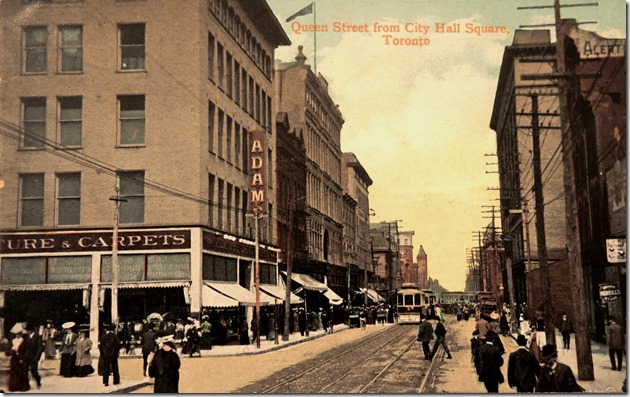
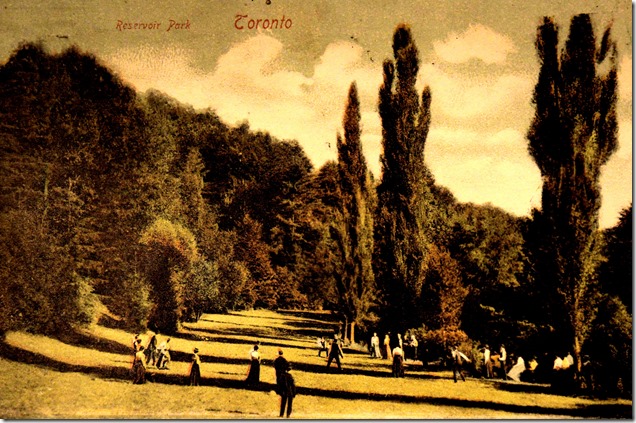
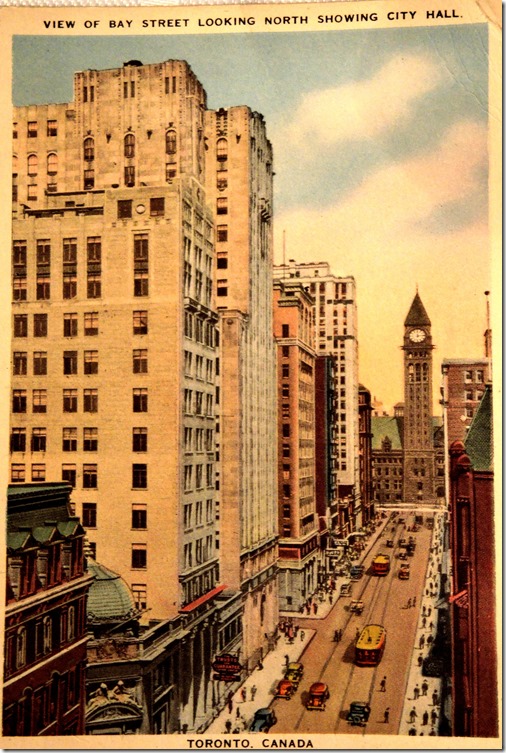
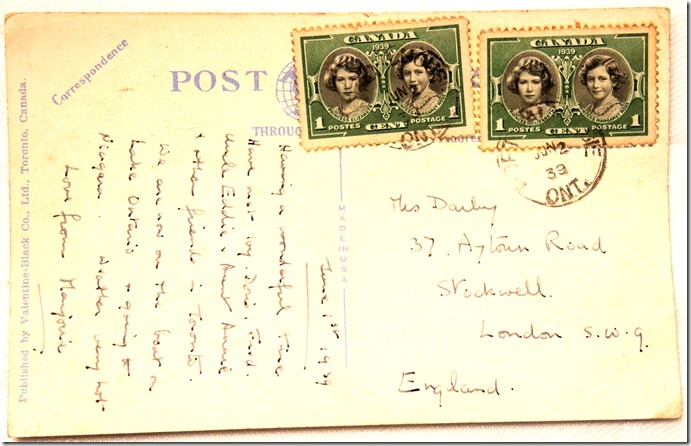
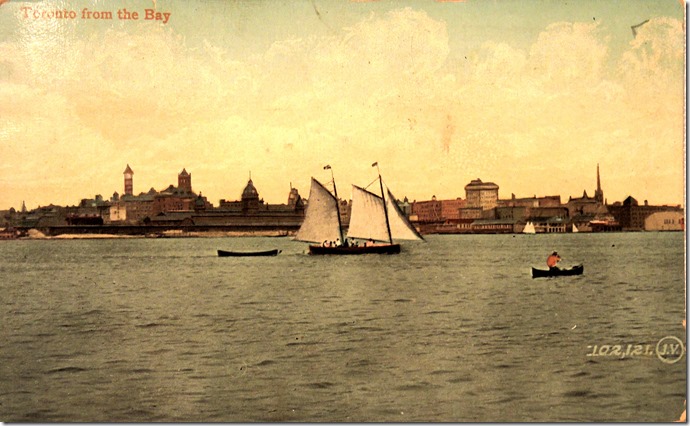
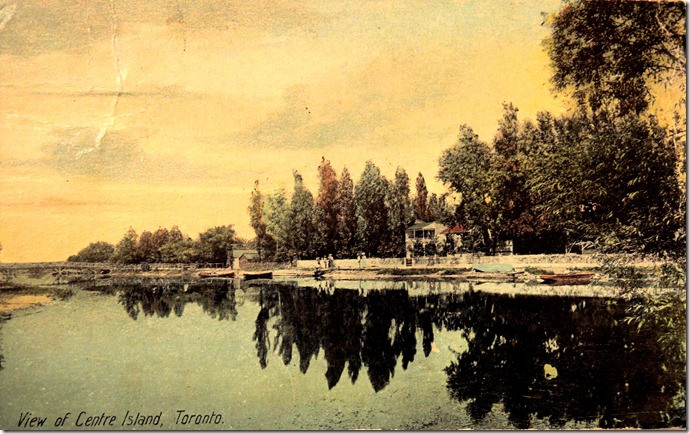
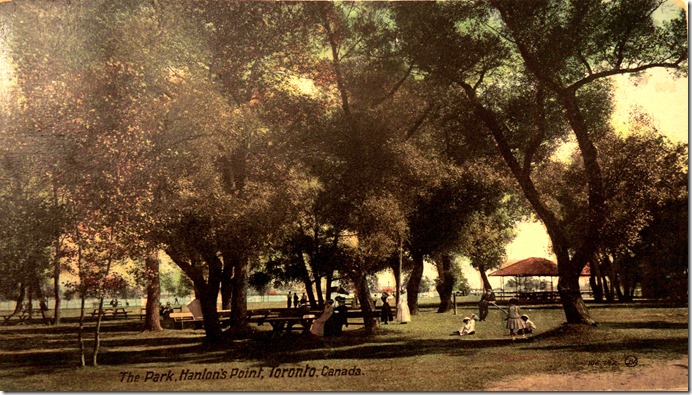
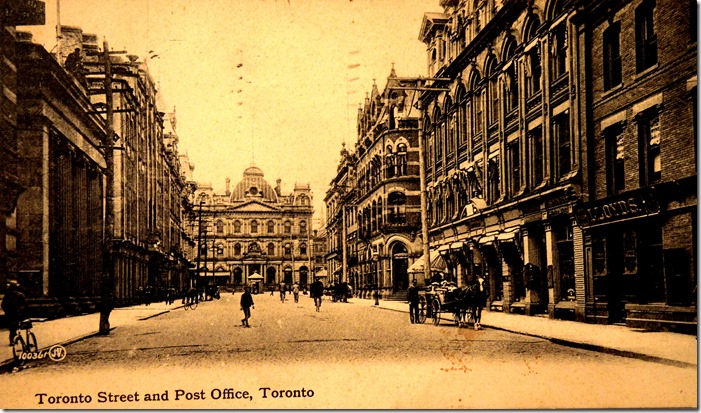
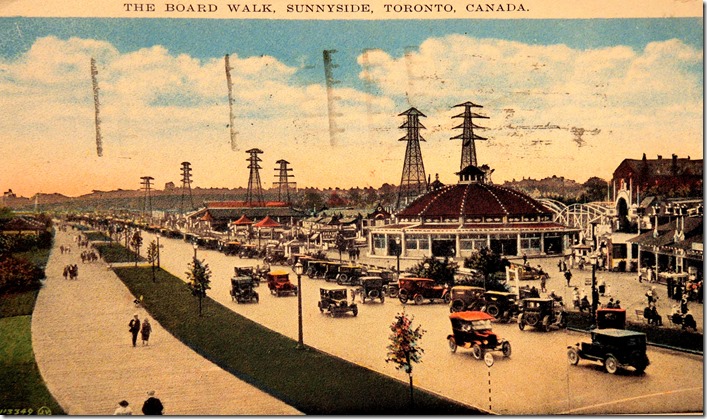
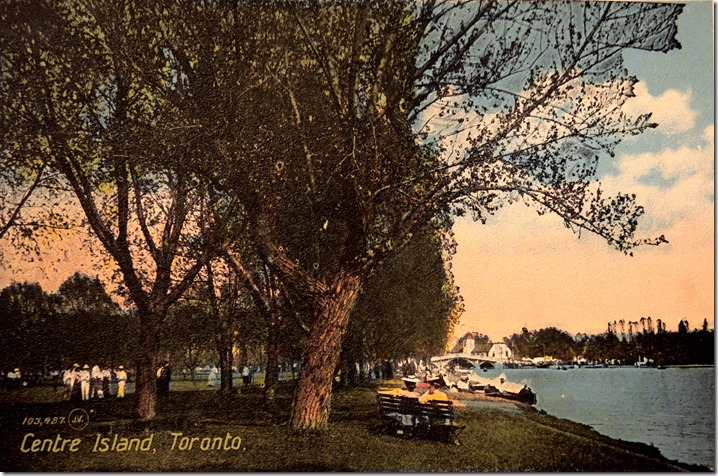
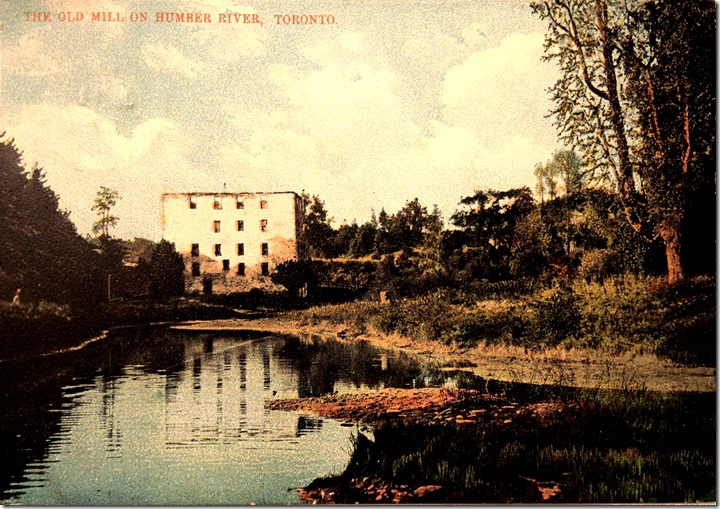
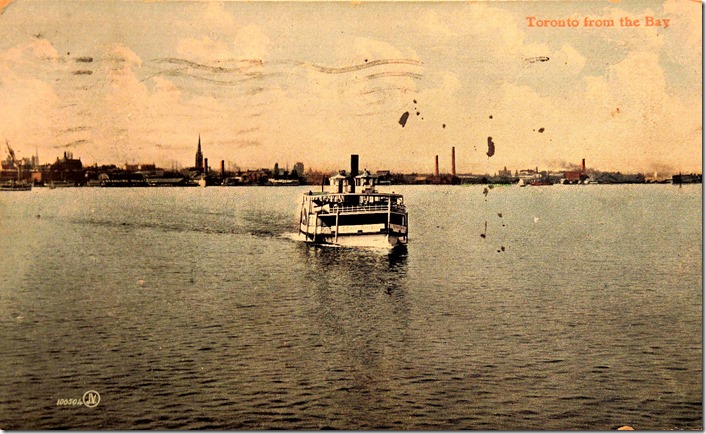
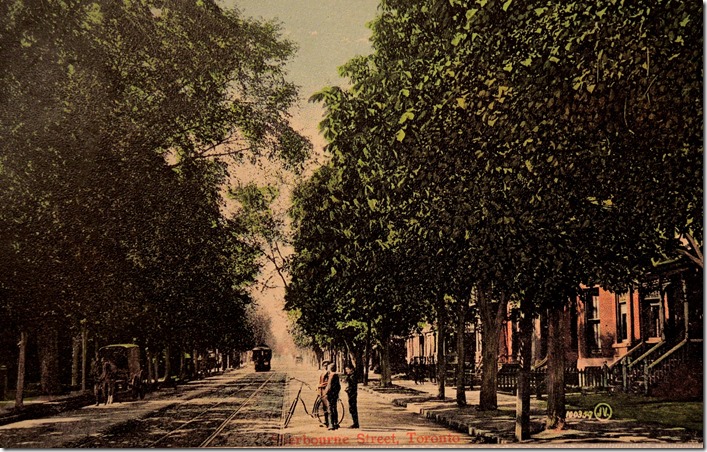
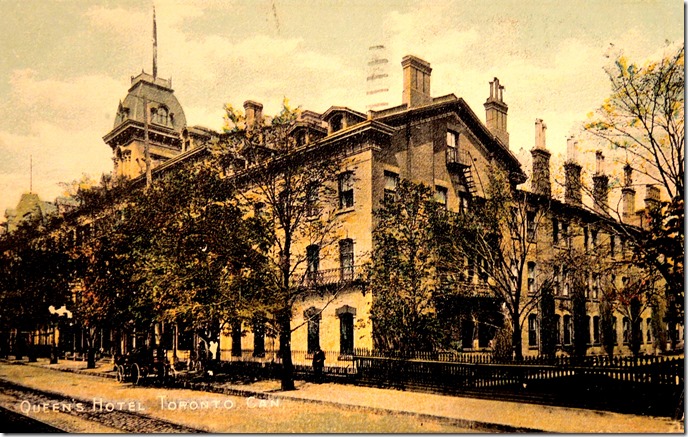
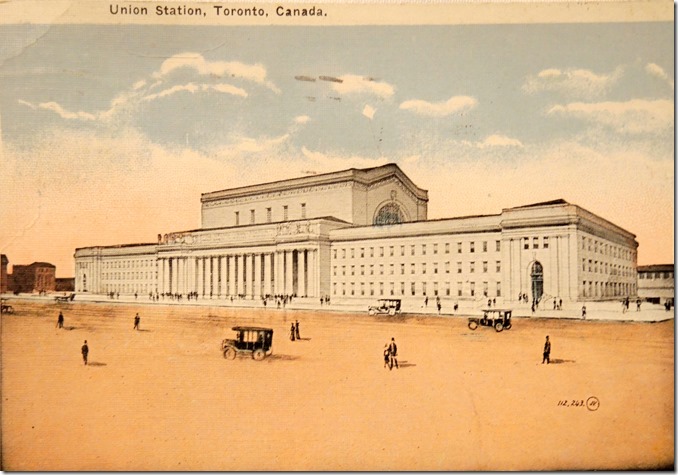
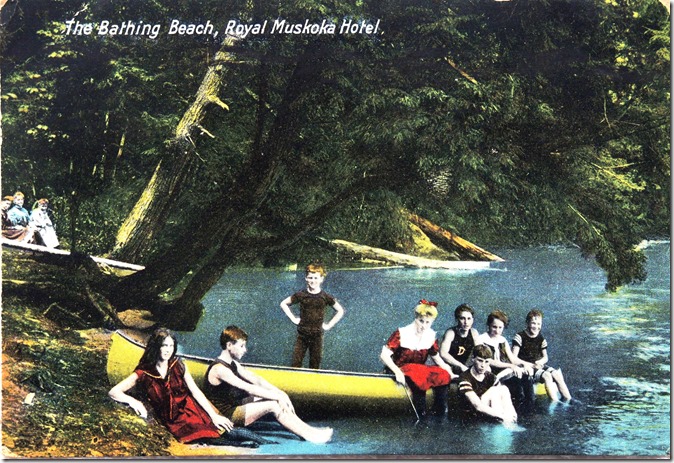
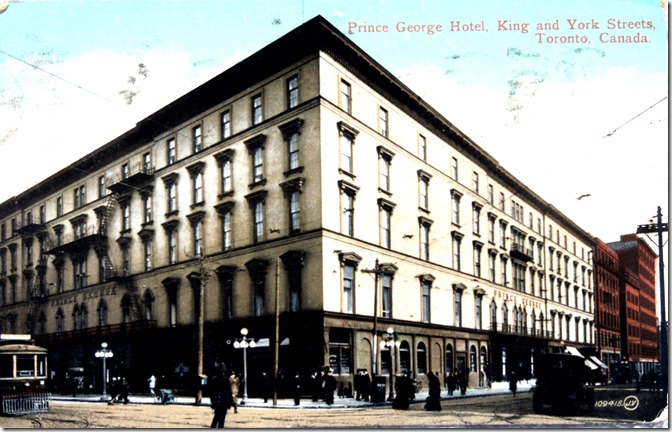
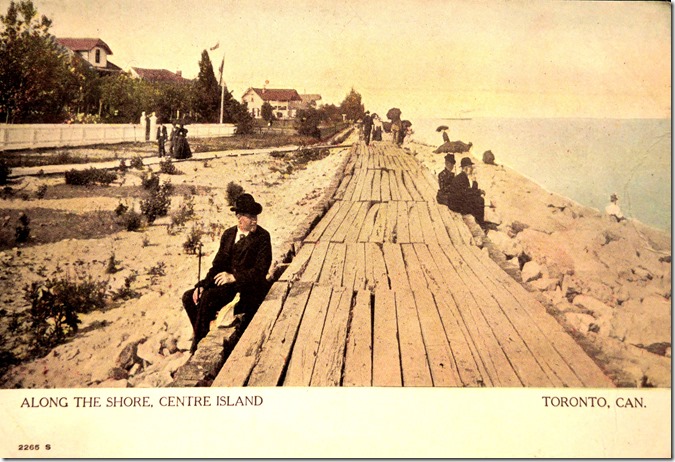
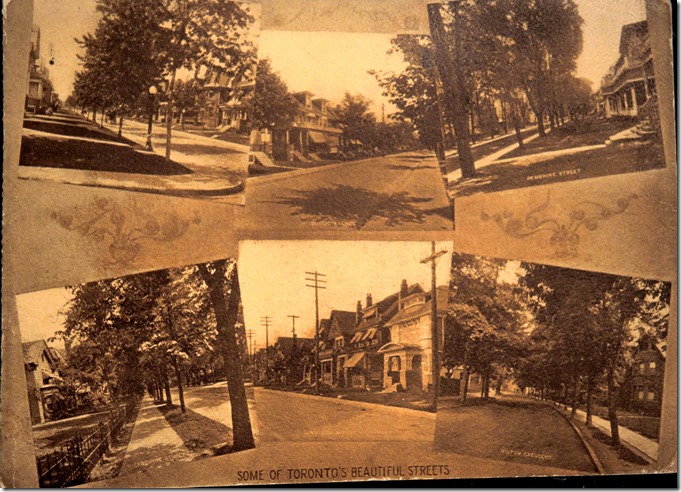
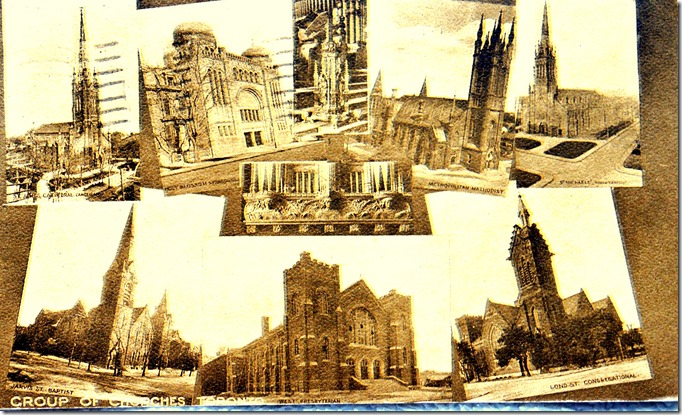
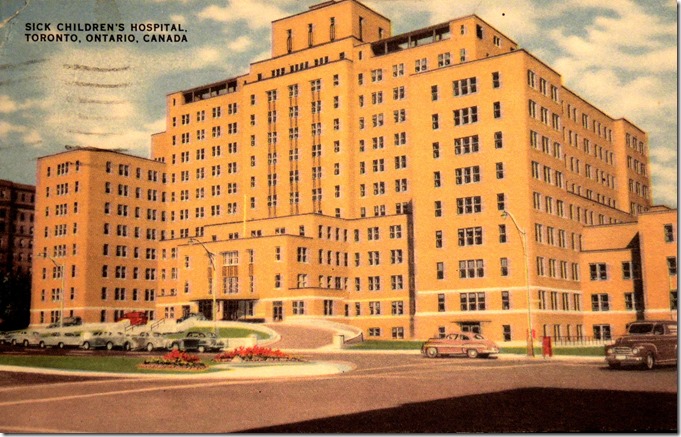

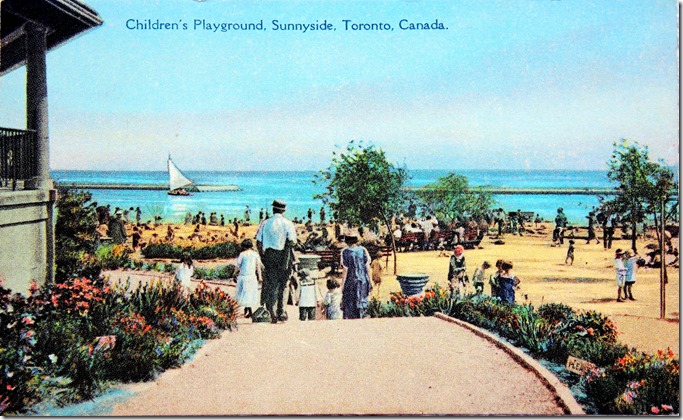
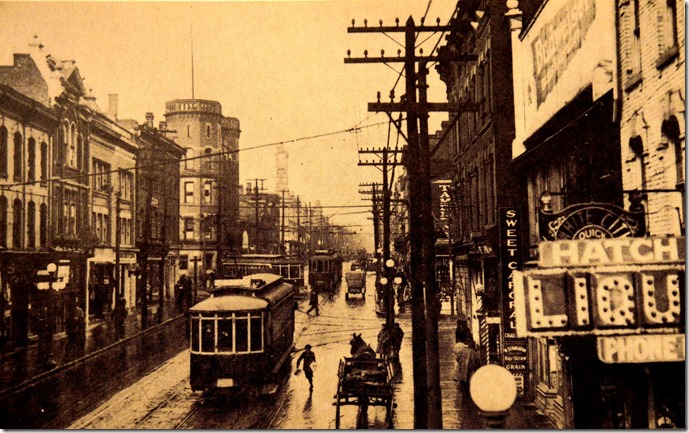
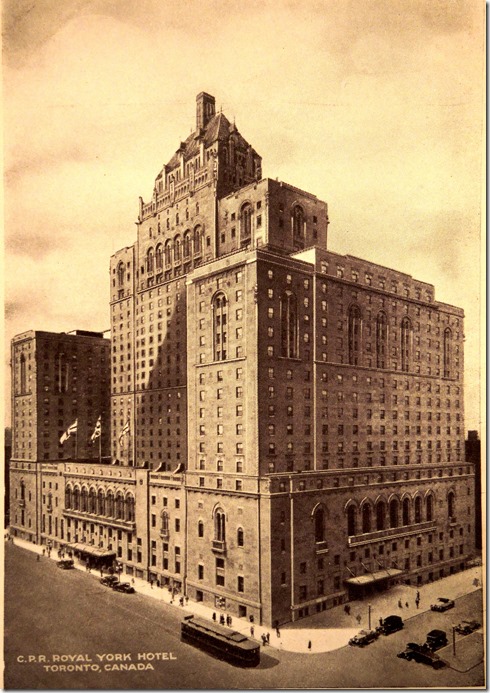
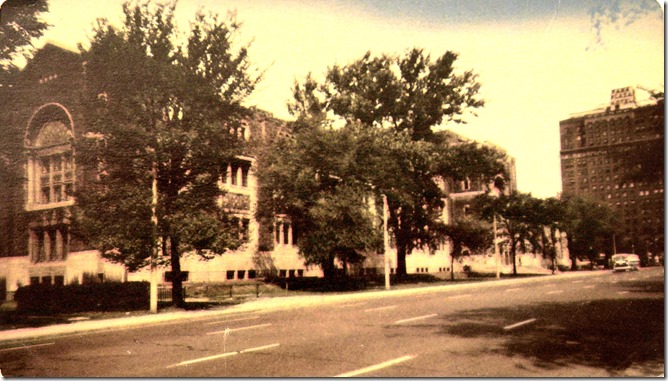
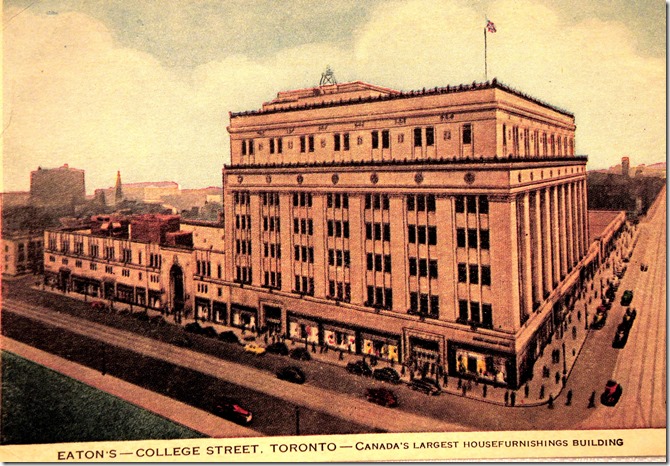

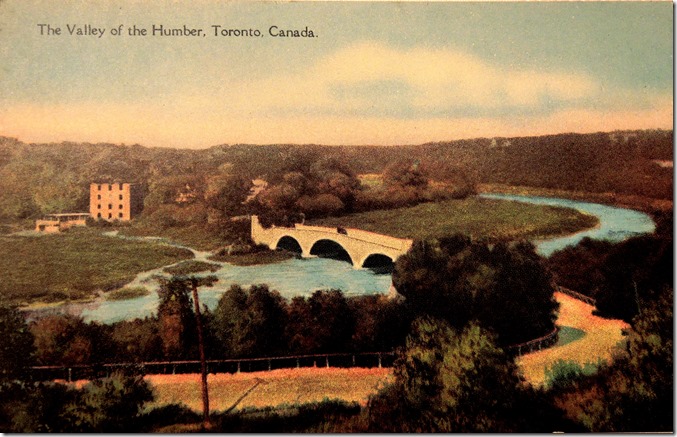
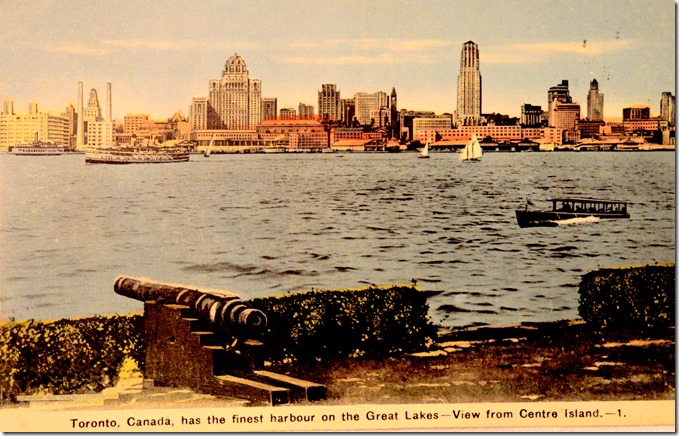
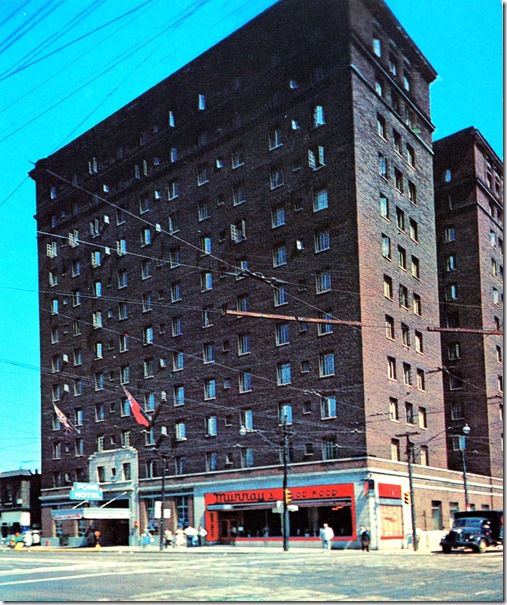
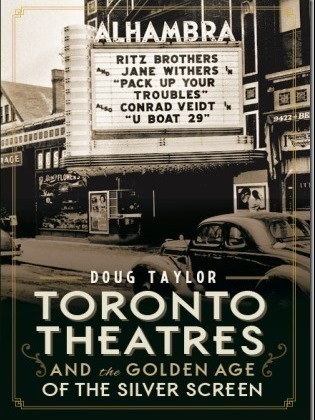


These postcards, and your commentary, are fascinating, thank you so much.
Hi Doug
I love these historic pictures of Toronto. Keep sending them!
Theresa
From: Historic Toronto Sent: Friday, October 30, 2015 9:16 PM To: [email protected] Subject: [New post] Stories from old Toronto postcards
Doug Taylor posted: ” Old Toronto postcards sometimes reveal lovers’ quarrels and family squabbles, as well as mundane messages. It was necessary to be discreet, since the cards were seen by postal employees, including the local mailman. When viewing the material written on p” Respond to this post by replying above this line
New post on Historic Toronto
Stories from old Toronto postcards by Doug Taylor
Old Toronto postcards sometimes reveal lovers’ quarrels and family squabbles, as well as mundane messages. It was necessary to be discreet, since the cards were seen by postal employees, including the local mailman. When viewing the material written on postcards of yesteryear, they appear similar to those sent in emails, or posted on Facebook and Twitter. Some of the messages are like the texts of today, though texts use more abbreviations.
I have been collecting old postcards of Toronto for many years; the postcard shown above is from my collection. It contains a view of Queen Street West, looking east from James Street, toward Yonge Street, about the year 1910. It was produced by Valentine and Sons’ Publishing Company, the most prolific marketer of postcards in the city during the first two decades of the 20th century. In the photo, on the left-hand side, to the east of the Adam’s Furniture Store, is the old Eaton’s Queen Street store, which was demolished to create the south section of the Eaton Centre of today. On the right-hand side of the photograph is the former Simpson’s Department store, which is now the Bay, at Queen and Yonge. The streetcar is a wooden car operated by the Toronto Street Railway Company, which provided city public transit until the TTC was created in 1921.
The Rosehill Reservoir Park is located southeast of the intersecti